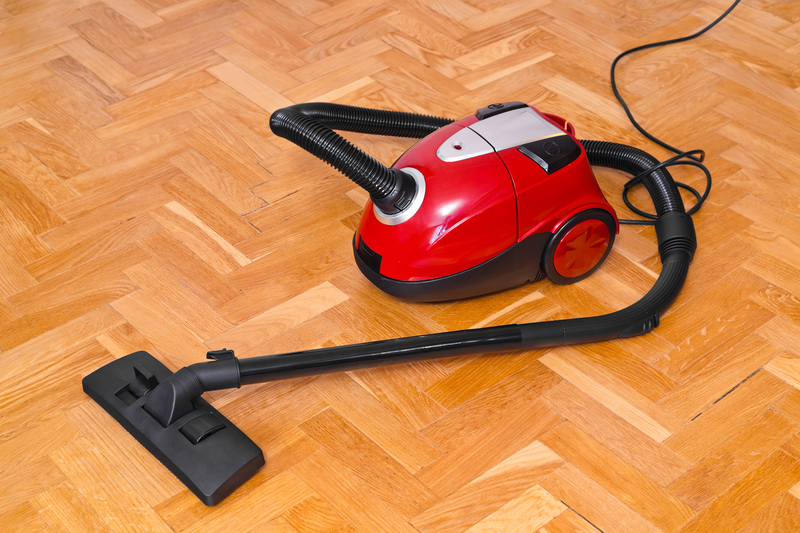Discover Effective Methods for Mould-Free Window Sills
Posted on 18/09/2025
Discover Effective Methods for Mould-Free Window Sills
Are you struggling with unsightly mould on your window sills? Experiencing black, green, or even orange stains near your windows can be frustrating and hazardous to your health. Mould growth not only damages your property but can cause respiratory problems and allergies. Luckily, this comprehensive guide will help you discover effective methods for mould-free window sills. We'll explore practical tips, cleaning solutions, preventative strategies, and maintenance routines to keep your home healthy, comfortable, and beautiful.
Understanding the Problem: Why Does Mould Grow on Window Sills?
Before you can successfully prevent and remove mould from window sills, it's important to understand why it appears in the first place. The main causes include:
- Excess Moisture: Humid air, condensation, and water leaks create the perfect breeding ground for mould spores.
- Poor Ventilation: Insufficient air movement leads to trapped moisture on windows and sills.
- Organic Materials: Dust, paint, and wood provide nutrients that encourage mould growth.
- Cold Surfaces: Windows are often colder than room temperature, causing water droplets to accumulate and feed mould colonies.
Recognizing these factors allows you to take targeted action and preserve the cleanliness of your living space.

Signs You Need To Take Action
Early detection is crucial when it comes to mould on window sills. Watch out for the following indicators:
- Visible black, green, or orange spots on sills and around frames
- Musty or damp odours near windows
- Peeling paint or warped wood surfaces
- Condensation or frequent dampness on glass and adjoining areas
If you notice any of these symptoms, it's time to act fast and utilize effective techniques for keeping window sills mould-free.
How to Safely Remove Mould from Window Sills
Eliminating existing mould is the essential first step toward achieving a mould-free windowsill. Here's a comprehensive process to get you started:
Step 1: Gather Protective Equipment & Materials
- Protective gloves & mask - Shield yourself from spores.
- Goggles - Protect your eyes from irritants.
- Disposable cloths or paper towels
- A spray bottle
- Soft-bristled brush or non-abrasive scrubbing pad
- Bin bag for disposing of contaminated materials
Step 2: Choose an Appropriate Cleaning Solution
- White Vinegar: Fill a spray bottle with undiluted vinegar. It's a natural disinfectant that kills up to 82% of mould species.
- Hydrogen Peroxide (3%): Effective against most mould varieties and less harsh than bleach.
- Baking Soda: Mix one teaspoon with water in a spray bottle - great for removing odours and gentle cleaning.
- Commercial Mould Removers: Look for products labelled as anti-mould or mildew-resistant.
- Avoid using bleach on wooden sills as it can damage the material and cause discolouration.
Step 3: The Cleaning Process
- Open windows and doors for ventilation.
- Spray your chosen solution generously onto the mouldy area.
- Let it sit for at least 10 minutes, allowing the solution to break down the mould.
- Scrub gently using a soft-bristled brush or pad.
- Wipe away residue with a damp cloth, then dry thoroughly with a paper towel.
- Safely dispose of all cleaning materials to prevent redistributing spores.
For persistent or severe growth, consider seeking help from a professional mould remediation specialist.
Preventative Measures: Keeping Your Window Sills Mould-Free
An ounce of prevention is worth a pound of cure! Follow these effective techniques and make them a regular part of your home maintenance routine to ensure consistently mould-free window sills:
1. Control Indoor Humidity
- Keep humidity below 60%: Use a hygrometer to monitor levels and aim for 30-50%.
- Utilize a dehumidifier: Especially in damp areas like basements or bathrooms.
- Fix leaks promptly: Inspect and repair any window seals, roof, or plumbing leaks to stop excess moisture at the source.
2. Improve Ventilation
- Open windows daily - even for a short time - to increase air flow and reduce moisture buildup.
- Use exhaust fans in kitchens and bathrooms to rapidly remove humid air.
- Consider trickle vents or window fans if your current windows lack air circulation options.
3. Regular Cleaning Routine
- Dust and wipe sills weekly: Use a damp cloth and dry thoroughly to prevent the buildup of nutrients for mould.
- Remove debris from window tracks: Crumbs, dirt, and leaves can trap moisture and accelerate mould growth.
4. Promptly Address Condensation
- Use absorbent cloths: Keep a microfibre or absorbent towel near windows to quickly wipe away morning condensation.
- Apply anti-condensation films or insulating window treatments: These can make glass surfaces warmer and reduce water droplets.
5. Upgrade Window Sills
- Opt for moisture-resistant materials: Vinyl, composite, or specially treated wood sills are less prone to mould than untreated timber.
- Paint with mould-inhibiting paints: Specialized coatings create a protective barrier and repel fungal growth.
Natural Remedies for Mould-Free Window Sills
Prefer eco-friendly options? Try these natural ways to maintain a mould-free window sill without relying on harsh chemicals:
- Lemon Juice: The natural acidity is great for breaking down stains and neutralizing odours.
- Tea Tree Oil: Mix a teaspoon of oil with water in a spray bottle for a powerful, pleasant-smelling antifungal spray.
- Clove Oil: Just a few drops in a litre of water can kill mould and inhibit regrowth.
Tip: Always patch-test a small, hidden area of your window sill to avoid discolouration or damage.
Long-Term Strategies to Maintain Mould-Free Window Sills
Creating a mould-resistant environment extends beyond occasional cleaning. Consider the following long-term approaches:
- Install double or triple-glazed windows: These reduce condensation by keeping the interior glass surface warmer.
- Choose self-cleaning or anti-microbial window glass: Some modern windows are treated with titanium dioxide coatings that actively break down organic materials.
- Re-seal or refinish window sills every few years: Repainting and sealing can renew waterproofing and provide ongoing protection.
Common Mistakes to Avoid with Window Sill Mould
While tackling a mould problem, steer clear of these frequent errors:
- Ignoring the root cause: Only cleaning visible mould but not addressing leaks, humidity, or insulation issues means the problem will return.
- Using paper towels without disposal: Reusing cleaning cloths or towels spreads mould spores around your home.
- Painting over mould: This only covers the issue temporarily--mould will reappear through the paint.
- Poor ventilation after cleaning: Failing to thoroughly dry the area encourages rapid mould regrowth.
When to Call a Professional
Despite best efforts, some cases require expert help:
- Extensive infestations: If mould covers more than 1 square metre or keeps returning quickly.
- Hidden mould: Persistent musty odours may mean growth behind walls or under sills.
- Health concerns: Anyone with asthma, allergies, or weakened immune systems may need professional removal to protect wellbeing.

Frequently Asked Questions (FAQ)
What is the best cleaning solution for mould on window sills?
White vinegar and hydrogen peroxide are both highly effective. They kill most mould types, are easy to use, and don't damage wood or painted surfaces when used properly.
How can I prevent window condensation in winter?
Improve insulation, use a dehumidifier, open windows for short bursts, and always dry condensation promptly. Install thermal curtains or apply insulating window film for extra protection.
Can I use bleach for cleaning mould from window sills?
While bleach can remove stains, it may damage or discolor wood and painted surfaces. It's not always necessary for small patches--a vinegar or hydrogen peroxide solution is safer.
How often should I clean window sills to keep them mould-free?
Weekly dusting and cleaning is recommended, especially in humid or high-traffic rooms. Clean up condensation or spills as soon as you spot them.
Final Thoughts: Achieving Mould-Free Window Sills for Good
Discovering effective methods for mould-free window sills means combining smart cleaning, preventative steps, and regular maintenance. Armed with the knowledge above, you can enjoy windows that are not only mould-free but also visually pleasing, healthy, and long-lasting. Don't wait for mould to take hold--act now, and keep your home fresh and safe all year round.
If you found this guide useful, share it with friends, and return for more comprehensive home care tips!





